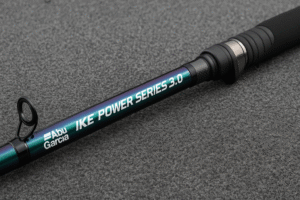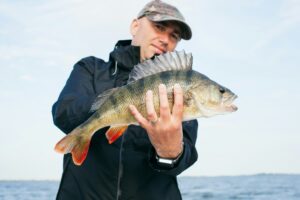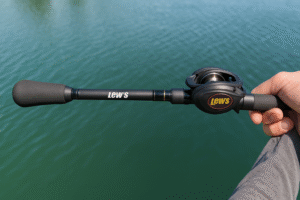Walleye Fishing Made Easy: Top Baits, Gear, and Techniques for All Seasons

Walleye fishing is one of the most popular outdoor activities across North America. From the lakes of Minnesota to the rivers of Canada, anglers love going after this tasty and tricky fish.
Walleye are fun to catch and make great meals, which is why so many people fish for them all year round—summer, winter, spring, and fall.
Many anglers enjoy the challenge of learning new ways to catch walleye.
These fish move around a lot and react to different weather, water, and bait. That means there’s always something new to try.
In this guide, you’ll learn where to find walleye, the best times to catch them, the top techniques and baits, and what gear you need to get started.
Whether you’re new to fishing or want to sharpen your skills, this guide has something for you.

Understanding Walleye Behavior
To catch more walleye, it helps to know how they act and what makes them different from other fish.
One thing that stands out is their eyes. Walleye have a shiny, cloudy look in their eyes that helps them see really well in low light.
This gives them an edge when it’s dark, cloudy, or the water is murky. In fact, they often feed early in the morning, late in the evening, or even at night—when other fish are resting.
Walleye are also smart hunters. They eat smaller fish like minnows and perch, but they won’t say no to crayfish, insects, or frogs if they’re nearby.
They’re not picky—they’ll go after whatever food is easy to catch.
Another cool thing about walleye is how they move.
During the day, they stay deeper in the water where it’s darker and cooler. These deep spots are usually near rocks, drop-offs, or underwater points. At night, they move up to shallow areas to feed. This daily movement means anglers need to adjust where and how they fish, depending on the time of day.
Understanding these habits will help you find more walleye and improve your chances of landing a great catch.
Best Times to Catch Walleye
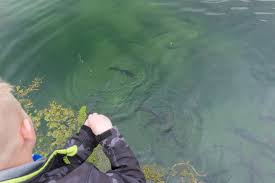
Walleye are most active during low-light times of the day. That means your best chances to catch them are early in the morning—just before and after sunrise—or in the evening around sunset.
These are the times when walleye come closer to shore to hunt, using their strong night vision to find food.
On calm, cloudy days, they may stay active a bit longer, giving you more time to fish.
In spring, right after ice melts, walleye move into shallow areas to spawn. This is a great time to catch them, especially near rocky or sandy spots.
After spawning, they might slow down for a few days but then become active again as the water warms.
During summer, walleye often stay deeper during the day, especially when the sun is bright. Fishing early, late, or even at night works best. Windy days can help too—waves stir up the water and make walleye more aggressive.
Fall is one of the top seasons for walleye fishing. As the water cools, they feed more to prepare for winter. In early winter, many anglers ice fish for walleye, especially in northern lakes.
Knowing these patterns helps you pick the right time and place to fish all year long.
Where to Find Walleye
Walleye live in many types of water, from small rivers to huge lakes.
You can find them in shallow backwaters, deep reservoirs, and even giant lakes like the Great Lakes. But to catch walleye, it’s not just about picking a lake—it’s about knowing where they are at the right time of year.
Seasonal Movements
Walleye move with the seasons. In spring, they head to shallow, rocky spots to spawn. These areas often have gravel or rocks, and the fish stay nearby afterward to rest and feed.
In summer, they move to deeper water, often hanging out near drop-offs, points, or underwater hills. If the lake has weeds, walleye may hide near healthy weed beds where food is easy to find.
In the fall, walleye begin feeding more as the water cools.
\They move from their summer homes to places closer to where they’ll spend winter, usually deeper water near their spring spawning grounds. Winter walleye are often found in deep holes or along drop-offs, but they may come up to feed during low-light times.
They also move throughout the day. Walleye stay deep during the day and move shallower to feed at dusk and dawn. So plan your fishing time around these patterns.
Following Baitfish and Forage
Walleye are always looking for food. If you want to find them, look for their favorite snacks. Walleye love to eat yellow perch, minnows, crayfish, frogs, and even insect larvae like mayfly nymphs. If you see baitfish schooling up in an area, chances are good that walleye are nearby.
In fall, frogs start moving into muddy lake bottoms to hibernate, and walleye follow them to shallow water to feed. In rivers, walleye also move into current breaks and tributaries where food is easier to catch. Always ask yourself, “What are walleye eating here?” It’s a good way to find out where they might be.
Key Structure Types
Walleye love structure—natural features in the lake or river bottom that give them cover and access to food. Some of the best spots include:
- Points and drop-offs – Walleye hang around these underwater ledges, especially during the day.
- Weed edges – Walleye like the outer edge of weed beds, especially ones with cabbage or milfoil.
- Rocky areas – They love places with rocks and gravel, like reefs, boulder piles, or rocky flats.
- Sunken wood – Fallen trees and underwater timber can hold both baitfish and walleye.
- Current seams – In rivers, look for where fast and slow water meet. These spots make it easier for walleye to wait and strike passing food.
One great trick is to find a flat with some grass on one side, rocks on another, and a nearby drop-off. Walleye may stay deep during the day, then move onto the flat to feed at sunset.
Fish the Edges
Walleye are edge hunters. They like the borders between deep and shallow, weeds and open water, fast and slow current, and rocky and muddy bottoms. Even spots that look flat often have small edges, like an old creek bed or a patch of weeds. These small changes in the bottom can hold lots of fish.
If you learn how to spot these edges, you’ll be much more likely to find walleye and bring home a great catch.
Top Walleye Fishing Techniques

There are many ways to catch walleye, and that’s what makes it so exciting! Whether you’re fishing from shore or a boat, you can try different tactics until you find what works best. Here are four of the most effective walleye fishing techniques that every angler should know.
Casting Tactics
Casting is one of the easiest and most fun ways to catch walleye. It works well from both the shore and a boat. In the spring, after walleye are done spawning, they hang out in shallow areas.
This is the perfect time to cast small jigs (1/8 to 3/16 ounce) tipped with soft-plastic minnows. Aim for spots like rocky points, weed edges, or drop-offs in 6 to 14 feet of water.
Lipless crankbaits also work great in spring, especially in murky water.
In early summer, try casting shallow-diving crankbaits over grassy flats or along rocky shorelines.
In summer and fall, swimbaits on jigs become super useful. They help you cover a lot of water quickly and are very effective at dawn, dusk, or even at night.
In the fall, casting heavier metal lures, like blade baits or Jigging Raps, around deeper structures (18 to 35 feet) can bring in big walleye.
Vertical Jigging
Vertical jigging is great when you’re fishing from a boat. It means dropping your lure straight down and keeping your line vertical in the water.
This gives you full control of your bait and helps you feel even the lightest bites.
This technique works well in rivers, deep lakes, and reservoirs. It’s also great for fishing over rocky or snaggy bottoms because your bait stays right below you instead of dragging across the ground.
Use a jig with a soft-plastic tail or tip it with live bait like a minnow or leech. Metal baits like Jigging Spoons or Jigging Raps also work really well for deep water walleye.
Vertical jigging lets you stay in the strike zone longer, making it one of the most effective ways to catch fish that are holding in deeper water.
Trolling for Walleye
Trolling means dragging your bait behind a moving boat. It helps cover a lot of water and is perfect for finding scattered walleye or when fishing new areas.
Trolling also keeps your bait in the water more often, which gives you more chances to get a bite.
Popular trolling baits include crankbaits, spinner rigs, and spoons. You can troll these at different depths depending on where the walleye are swimming.
If you’re just starting out, don’t worry about fancy gear. You can begin by trolling a crankbait behind your boat along drop-offs or weed lines. This is known as flat-lining and it works great at dawn or dusk.
At night, switch to a shallow-running crankbait and troll slowly over flats. Walleye move into shallow water to feed after dark, so this is a great way to catch them.
For more advanced trolling, anglers often use planer boards to spread out their lines. This helps cover even more water without getting lines tangled.
Live-Bait Rigging and Bottom Bouncing
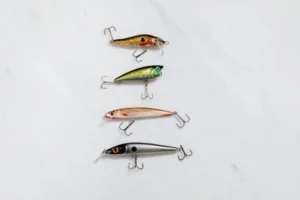
Live-bait rigging is a classic and super effective way to catch walleye, especially when they are being picky. The most common rig is the walking sinker rig (also called the Lindy Rig).
It uses a sliding sinker, a swivel, a short leader, and a hook tipped with a nightcrawler, minnow, or leech.
Adding a floating jig head or small float to the hook helps lift the bait just off the bottom—right where walleye love to strike. You can drift slowly or fish from shore using this setup.
Another great option is bottom bouncing. This uses a bottom bouncer weight with a spinner rig behind it.
The spinner adds flash and vibration while your bait drags just above the lake or river bottom. This rig works really well on deep flats and along rocky ledges.
Some anglers skip the spinner and use a special slow-death hook with a half nightcrawler. This makes the bait spin slowly and drives walleye wild.
Best Baits for Walleye
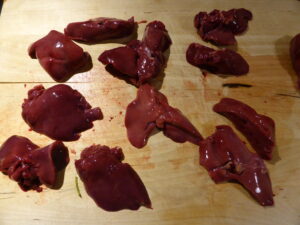
When fishing for walleye, choosing the right bait is key.
Walleye can be picky eaters, but with the right bait, you’ll increase your chances of success. There are two main types of baits to consider: live bait and artificial lures.
Live Bait vs. Artificial Lures

Walleye often respond well to live bait like minnows, nightcrawlers, and leeches.
These baits mimic the natural food that walleye hunt for in the wild, making them hard for fish to resist.
Using live bait can be especially helpful when walleye are not very active or are being picky. A simple rig with a minnow or nightcrawler can catch fish year-round, whether you’re fishing in shallow waters or deeper, cooler spots.
On the other hand, artificial lures are popular because they can cover more water and often trigger more active bites.
Jigs with soft plastics, like swimbaits, are deadly for walleye. These baits mimic the movement of small fish or worms, attracting walleye from a distance. Crankbaits and jerkbaits are also great, especially when trolled or cast. Crankbaits work well from spring to fall, and lipless cranks can be used in murky water for more visibility.
Best Options by Season or Condition
The best bait for walleye often depends on the season or water conditions.
- Spring and Fall: Jigs with soft plastics or live bait like leeches and nightcrawlers work best when walleye are near shallow water or drop-offs. During these seasons, walleye feed heavily, so they will bite on a variety of baits.
- Summer: Swimbaits are effective in the summer when walleye are deeper in the water. Crankbaits also work well for trolling over long distances.
- Winter: Jigging spoons and blade baits are popular for ice fishing, especially in deeper waters where walleye are suspended.
Essential Gear for Walleye Fishing
To catch walleye, it’s important to have the right gear.
While you don’t need to spend a lot of money when starting out, having good equipment will make fishing more enjoyable and successful. Let’s take a look at some essential gear for walleye fishing.

Recommended Rods and Reels
For rods, a 6-foot, 6-inch to 7-foot medium-light spinning rod is a great choice for beginners. It’s perfect for casting, jigging, and live-bait rigging.
If you’re fishing deeper waters, you might want a 7-foot medium spinning rod. When you’re ready to try trolling, medium-heavy rods around 7 to 8 feet work well, especially if you use planer boards or troll baits at different depths.
For reels, most walleye anglers use a 2500 or 3000-sized spinning reel for smooth casting and retrieval. If you enjoy trolling, consider getting a line-counter reel.
This reel helps track how much line you’ve let out, which is important for controlling the depth of your bait and catching more fish.
Best Line Types for Different Techniques
Choosing the right fishing line can make a big difference. Braid is great for many techniques because it’s strong and thin. It’s perfect for jigging or casting with lures. Many anglers use 8- to 15-pound braid with a fluorocarbon leader at the end for a more natural presentation. If you’re just starting out, 6- to 8-pound monofilament is good for most fishing situations. It’s easy to use and works well for casting and jigging.
Helpful Electronics (Fish Finders, GPS)
You don’t need fancy electronics to catch walleye, but they can make a big difference. A fish finder with 2D sonar helps you see the bottom of the lake, find fish, and determine their depth.
GPS and digital maps help you quickly locate good fishing spots and navigate to them. Newer forward-facing sonars like Garmin’s LiveScope can show you fish in real-time, making walleye fishing more efficient and fun.
Bonus Tip: Don’t Limit Yourself
Here are 20 helpful fishing tips to get you thinking outside the box and improve your walleye fishing experience:
- Try Fishing at Different Times: Early mornings and late evenings are often the best for walleye.
- Vary Your Techniques: Don’t just stick to one method; try casting, trolling, or jigging to see what works.
- Fish During Different Seasons: Walleye behave differently in spring, summer, fall, and winter, so try adjusting your techniques.
- Move Around: If you aren’t catching anything, don’t be afraid to change locations.
- Pay Attention to the Weather: Overcast skies are great for walleye fishing because fish feel safer closer to the surface.
- Change Your Bait: If one type of bait isn’t working, try switching to something new, like minnows, nightcrawlers, or soft plastics.
- Use a Fish Finder: A fish finder can help you locate fish and understand the bottom structure of the lake.
- Check Water Temperature: Walleye are more active in certain water temperatures, usually between 55-65°F.
- Focus on Drop-offs: Walleye love to hide near drop-offs and underwater structures.
- Use Lighter Line: A lighter fishing line can help you get more bites and avoid spooking fish.
- Try Using Jerkbaits: They work well when fish are more cautious and less likely to chase fast-moving lures.
- Change Up Your Speed: Sometimes, slowing down or speeding up your reel can attract walleye.
- Fish in the Wind: Walleye often gather on wind-blown shores, making it a great spot to fish.
- Use Live Bait for Tough Days: When the fish are being stubborn, live bait like minnows or leeches can do the trick.
- Watch for Fish Jumping: If you see fish jumping or breaking the surface, it’s a good sign to start fishing in that area.
- Fish in the Shadows: Walleye like to stay in shaded areas during hot weather, so look for spots with plenty of cover.
- Learn to Read the Water: Look for changes in water depth, current, or structure, which might attract walleye.
- Try Night Fishing: Walleye are often more active at night, so don’t hesitate to fish after the sun goes down.
- Stay Quiet: Avoid making loud noises in the boat or on the shore to prevent scaring the fish.
- Observe Other Anglers: If you see other anglers catching walleye in a specific spot, try the same location or technique.
By staying flexible, trying new spots, and observing the environment around you, you’ll become a more successful walleye angler. Keep experimenting and learning from each experience!


